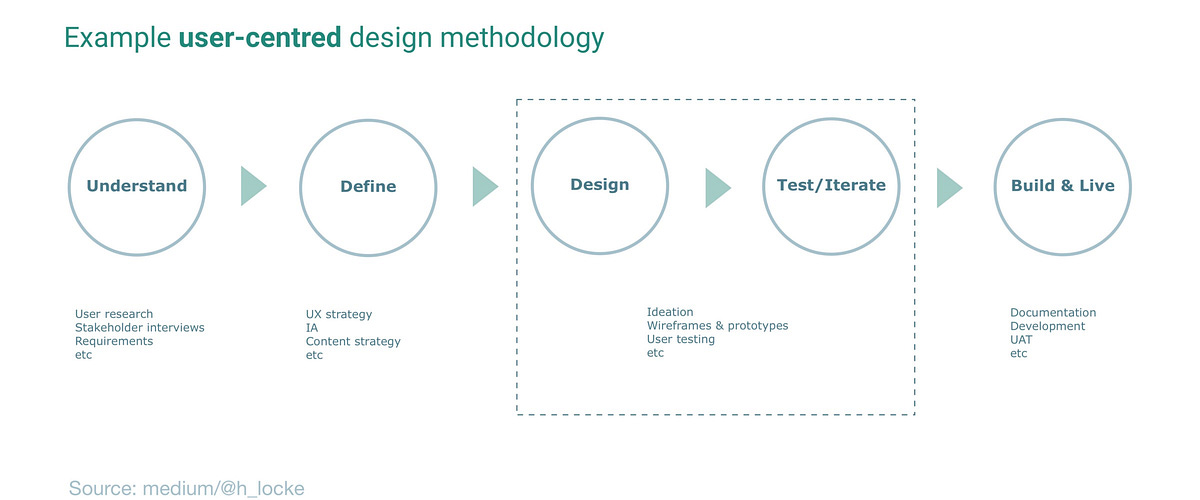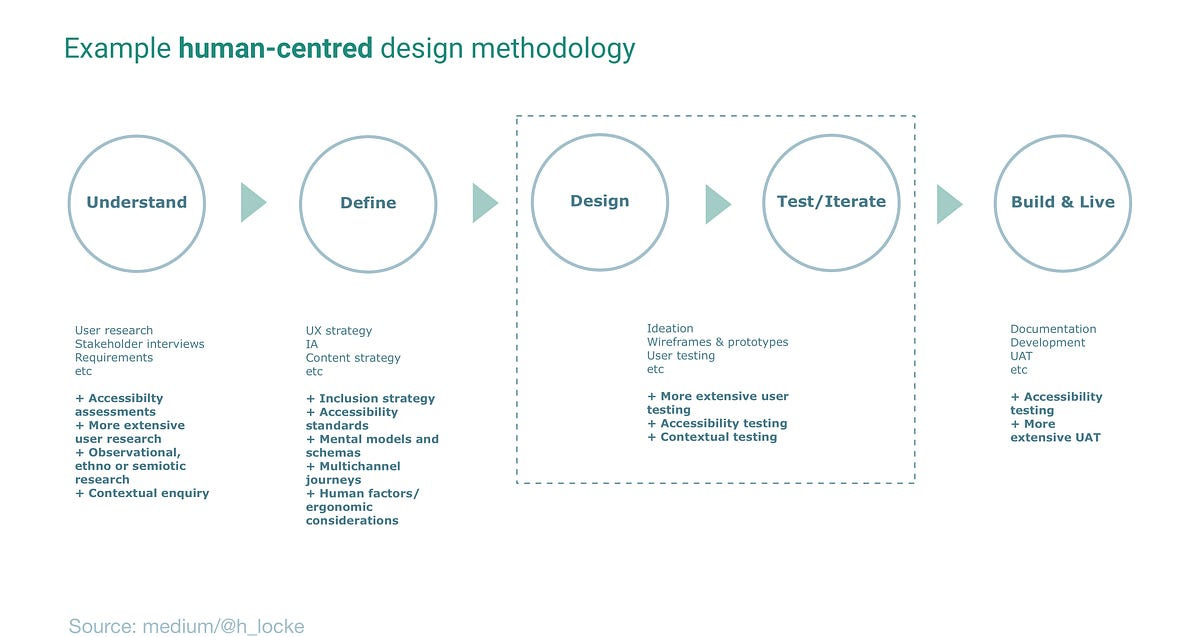An important distinction for methodology planning
Regular readers will know that I experience the daily joy that is working in a marketing agency. Because of this, I spend a significant amount of time correcting assumptions, de-risking projects and generally UX-plaining terms that people are using inaccurately and sometimes dangerously, when it comes to project delivery.
One of the classic misconceptions that I’ve been trying to overcome for years, is the interchangeable usage of of “user-centred” and “human-centred”. To be clear, they are similar, but they are not the same thing.
User-centred and human-centred methodologies are not the same thing.
What’s the difference?
At first glance the two methodologies look similar. And at the core they use many of the same methodologies and deliverables. However there are some key differences.
User-centred
User-centred methodologies, as indicated by the name, put users at the centre of the design process. From discovery and upfront generative research with existing or target users through to user testing.
The focus is usually on understanding and designing for the predicted users or user groups of the end product.

Human-centred
Human-centred (aka universal design) methodologies aim to include all humans as possible users. This means that your design and research process needs to include not only your client’s proposed target users, but all humans — all possible users, not just a specific target. As this is an inclusive process, you naturally need to include a wider range of users to uncover every imaginable (human) need throughout the research and design process if you are to ensure accessible outcomes.

Universal or human-centred design methodologies are also often used for designing solutions beyond a single screen or isolated platform experience, where a problem exists across physical, social and societal interactions.
Why does it matter?
One classic conversation I was once in in a previous marketing agency, was “We’re going to call it human-centred, not user-centred because it sounds better, ok?”
Classic marketing. Let’s rename something without bothering to
Keep reading with a 7-day free trial
Subscribe to It Depends... to keep reading this post and get 7 days of free access to the full post archives.




